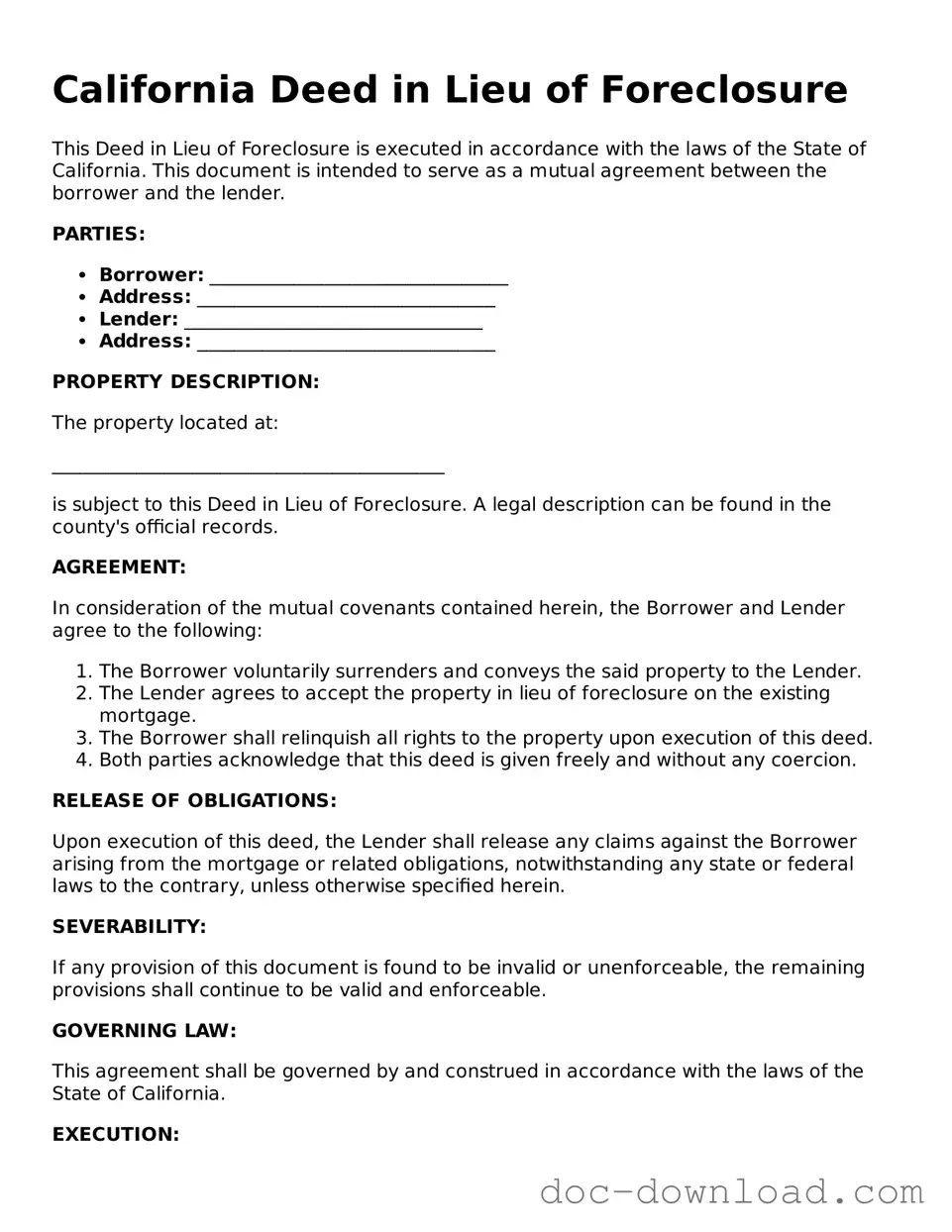California Deed in Lieu of Foreclosure
This Deed in Lieu of Foreclosure is executed in accordance with the laws of the State of California. This document is intended to serve as a mutual agreement between the borrower and the lender.
PARTIES:
- Borrower: ________________________________
- Address: ________________________________
- Lender: ________________________________
- Address: ________________________________
PROPERTY DESCRIPTION:
The property located at:
__________________________________________
is subject to this Deed in Lieu of Foreclosure. A legal description can be found in the county's official records.
AGREEMENT:
In consideration of the mutual covenants contained herein, the Borrower and Lender agree to the following:
- The Borrower voluntarily surrenders and conveys the said property to the Lender.
- The Lender agrees to accept the property in lieu of foreclosure on the existing mortgage.
- The Borrower shall relinquish all rights to the property upon execution of this deed.
- Both parties acknowledge that this deed is given freely and without any coercion.
RELEASE OF OBLIGATIONS:
Upon execution of this deed, the Lender shall release any claims against the Borrower arising from the mortgage or related obligations, notwithstanding any state or federal laws to the contrary, unless otherwise specified herein.
SEVERABILITY:
If any provision of this document is found to be invalid or unenforceable, the remaining provisions shall continue to be valid and enforceable.
GOVERNING LAW:
This agreement shall be governed by and construed in accordance with the laws of the State of California.
EXECUTION:
IN WITNESS WHEREOF, the parties hereto have executed this Deed in Lieu of Foreclosure on this _____ day of __________, 20____.
BORROWER:
__________________________________________
Signature
LENDER:
__________________________________________
Signature
Witnesses:
__________________________________________
Signature
__________________________________________
Signature
